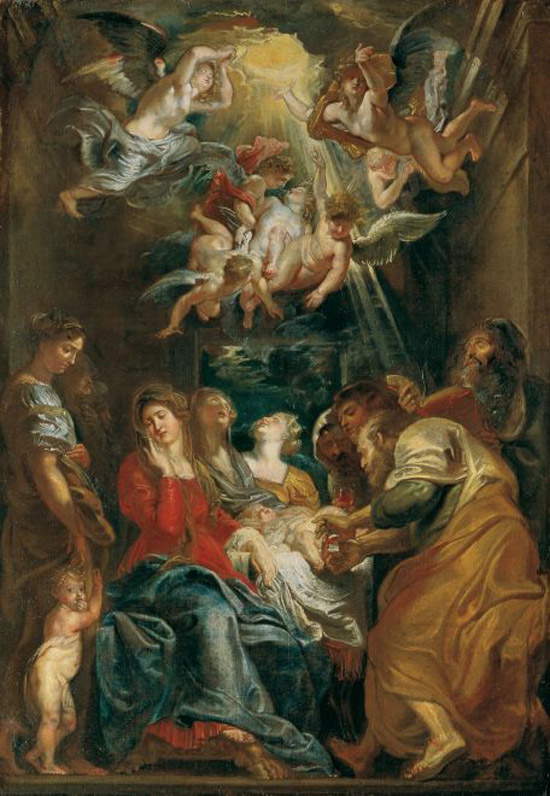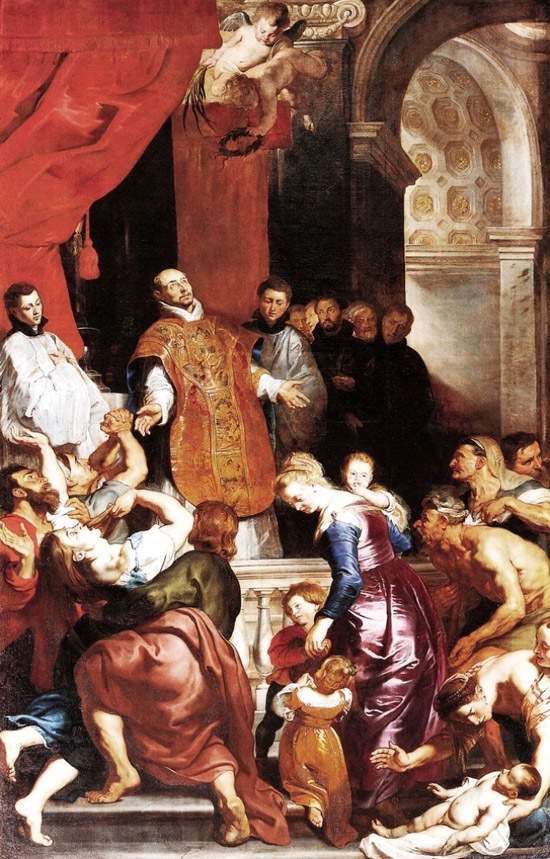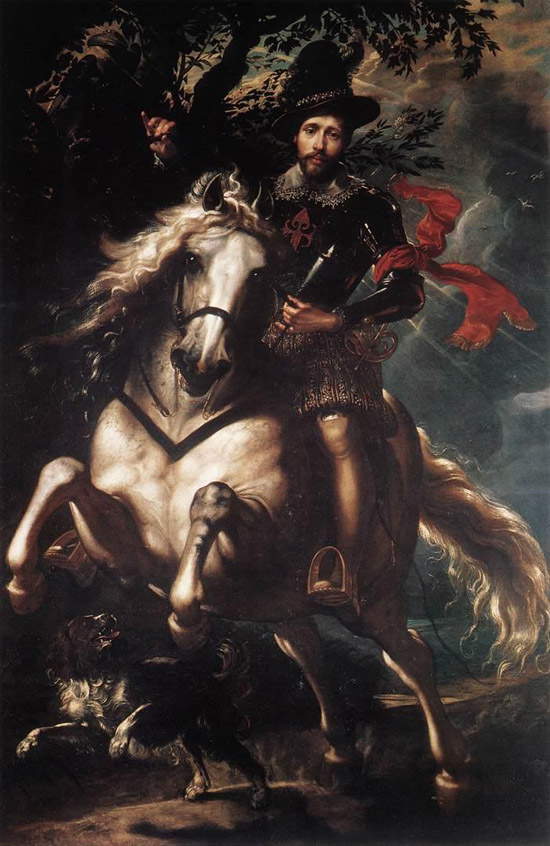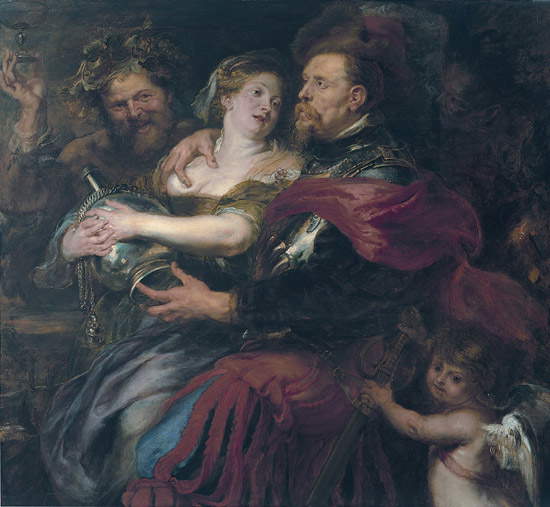Pieter Paul Rubens in Genoa: four works to see
Cheerful and convivial atmospheres, rich colors, florid women: we are all more or less familiar with the sumptuous paintings of Pieter Paul Rubens (1577 - 1640) who was, arguably, the greatest European exponent of the Baroque in painting. Not everyone knows, however, that Rubens stayed in Genoa on several occasions: he was in the Ligurian capital a first time in February 1604, on his way back from Spain to Mantua, a city where he was working at the time for the Gonzagas; then he returned in 1605, stopping during a trip to Rome; and again he returned in the summer of 1607, when he stayed at the villa of the nobleman Giovanni Battista Grimaldi in Sampierdarena, together with the Duke of Mantua, Vincenzo I Gonzaga. During this latter stay, motivated by the fact that the duke wanted to benefit from the summer air of the sea (as well as ... from bathing in the waters of the Ligurian Sea), Rubens also had the opportunity to study closely the city’s most beautiful palaces, so much so that in 1622 he went so far as to publish a book, The Palaces of Genoa, to make the magnificence of Genoa’s buildings known in his Flanders as well.
Of course, during his sojourns, Rubens was also able to make several paintings for the Genoese nobility, and some of these works can still be found in the city. We have therefore selected four Rubens paintings, preserved in places open to the public, that can still be admired in Genoa, for a small Rubensian itinerary in the heart of one of the most beautiful cities in the world.
1. Circumcision (Church of Jesus)
The Altarpiece of the Circumcision is probably the first work Rubens executed in Genoa: it was commissioned from him in 1604 by Marcello Pallavicino, a cleric belonging to the Jesuit order and a member of one of the city’s most prominent families, specifically for Genoa’s Chiesa del Gesù (also known as the Church of Saints Ambrose and Andrew), which is located next to the Ducal Palace. A swirl of angels at the top of the painting opens the sky in order to let out the divine light that illuminates the body of the Infant Jesus, who is undergoing the rite of circumcision: this is an important moment in Christ’s life, because it is the first blood he shed, and thus alludes to his suffering on the cross. Note the figure of the Madonna, who turns away from the opposite side so as not to witness the scene, probably because she is impressed. All this while some characters seem to be strongly attracted by the presence of the angels in the sky. The colors in the painting are already the warm ones typical of Rubens’ art (and note how it is the color that forms the figures, in accordance with the dictates of Venetian painting-Rubens studied Titian’s art for a long time), while the swirling movement would seem to hark back to solutions by Tintoretto, a painter Rubens knew very well. The Circumcision is a work of paramount importance because it is considered the painting that kicks off the Baroque in Genoa: new is the impetuous movement that emotionally engages the viewers, new is the very strong light that affects the characters, and new is the use of foreshortening from below not so much for illusionistic purposes as to make the appearance of the angels more dramatic.
 |
| Pieter Paul Rubens, Circumcision (1604; Genoa, Chiesa del Gesù) |
2. Miracles of Saint Ignatius (Church of Jesus).
It is also found in the Church of Jesus, and to be exact in the chapel of St. Ignatius, whose decorations were commissioned by Niccolò Pallavicino, brother of the Marcello mentioned in connection with the previous painting, and which Marcello himself had to take care of. The latter, following Niccolò’s death in 1619, decided to carry out his brother’s testamentary wishes and commissioned Rubens to make, for the chapel, the Miracles of Saint Ignatius, which the painter painted in Antwerp and sent to Genoa presumably in 1620. To paint this composition, which features the founder of the Jesuit order, St. Ignatius of Loyola, Rubens based his work on a biography, the Vitae Ignatii Loyolae SOcietatis Jesus fundatoris, written by the Jesuit Pedro de Ribadeneyra, which was first published in 1572 and then also printed in Antwerp in 1587. Saint Ignatius is in the center, in a mystical attitude, with his arms spread wide to ask for the Lord’s intercession. He is accompanied by some members of his order and has a series of figures in front of him referring to his miracles. On the left, a woman is writhing as some men try to hold her at bay: it alludes to the miracle of the deliverance of the ossess. On the right, we have a sick man and woman, referring to miraculous healings performed by the saint, while in the center the woman with children refers to St. Ignatius’ ability to educate even particularly reluctant and difficult children.
 |
| Pieter Paul Rubens, Miracles of Saint Ignatius of Loyola (1619-1620; Genoa, Church of the Jesus) |
3. Equestrian Portrait of Giovanni Carlo Doria (National Gallery of Palazzo Spinola)
This is perhaps one of Rubens’ best-known portraits and one of the most valuable pieces in the National Gallery of Palazzo Spinola, where the work arrived in 1988 after several vicissitudes. The Doria family commissioned this portrait from Rubens in 1606 to celebrate the conferring of the Order of St. James, by King Philip III of Spain, on Giovanni Carlo: the painting thus remained in the family’s possession until 1838, when it passed to the Neapolitan branch of the family. In 1940 it was bought by a private collector who in 1941, on Mussolini’s orders, had to hand it over to Hitler, who assigned it to the Linz Museum in Austria. In 1948 the work was returned to Italy: it was first exhibited in the Palazzo Vecchio, then in 1985 came to the Museo Nazionale di Capodimonte in Naples, and finally, in 1988, it made its final return to Genoa. Giovanni Carlo Doria, son of the doge Agostino, is portrayed riding a handsome white horse rearing up on its hind legs: the nobleman is dressed in an elegant parade outfit and on his cuirass is stamped the symbol of the Order of St. James, a red cross, the same color as the stole he wears tied to his arm. Note how Giovanni Carlo Doria holds the reins of the horse with just two fingers: it is a symbol of steadfastness. Behind the foliage of the oak tree, a symbol of strength, we notice an eagle, which is the symbol of the Doria family, while instead below the horse we find a dog, representing the family’s loyalty to the Spanish crown. The impetuous movement of the horse, the dynamism of various elements such as the scarf and tree foliage, and the rays of light ripping through the ominous clouds of the sky, give us a tangible idea of Rubens’ Baroque poetics, devoted to impressing the viewer.
 |
| Pieter Paul Rubens, Equestrian Portrait of Giovanni Carlo Doria (1606; Genoa, Galleria Nazionale di Palazzo Spinola) |
4. Venus and Mars (Palazzo Bianco)
This painting was not actually made for Genoa, but arrived in Liguria later. At the artist’s death in 1640, it was still attested in Antwerp: it then went around several private collections and arrived in Genoa, in the collection of Francesco De Mari, in 1691, and then passed into the collection of Doge Giovanni Francesco II Brignole Sale. In 1889, the last heir of the Brignole Sale family, Maria, duchess of Galliera, donated a large portion of the family’s collections to the City of Genoa: among these works was Venus and Mars. Anciently, the work was known as Lanzichenecco con amante, precisely because the male figure in the center is portrayed in the guise of a lanzichenecco (in 1987 it was proposed, on the basis of comparisons with other paintings, that the man be identified as a member of the Van den Wijngaerd family of Antwerp). Given, however, the presence of some elements typical of Venus and Mars iconography (foremost among them Cupid disarming Mars by taking away his sword), the hypothesis has also been put forward that the characters might imply a mythological allegory. Thus, the god of war is seduced by the beauty of his beloved (Venus) and the joie de vivre provided by wine, which facilitates love and is represented by the god Bacchus, while on the right the ghostly figure of a Fury looks at the scene with disdain, as she is defeated by love. This is a work of Rubens’ maturity, dating from between 1632 and 1635. A curiosity: in the past there were art historians who thought that the two main characters were Rubens himself and his wife Hélène Fourment.
 |
| Pieter Paul Rubens, Venus and Mars (1632-1635; Genoa, Palazzo Bianco) |
Warning: the translation into English of the original Italian article was created using automatic tools. We undertake to review all articles, but we do not guarantee the total absence of inaccuracies in the translation due to the program. You can find the original by clicking on the ITA button. If you find any mistake,please contact us.



























